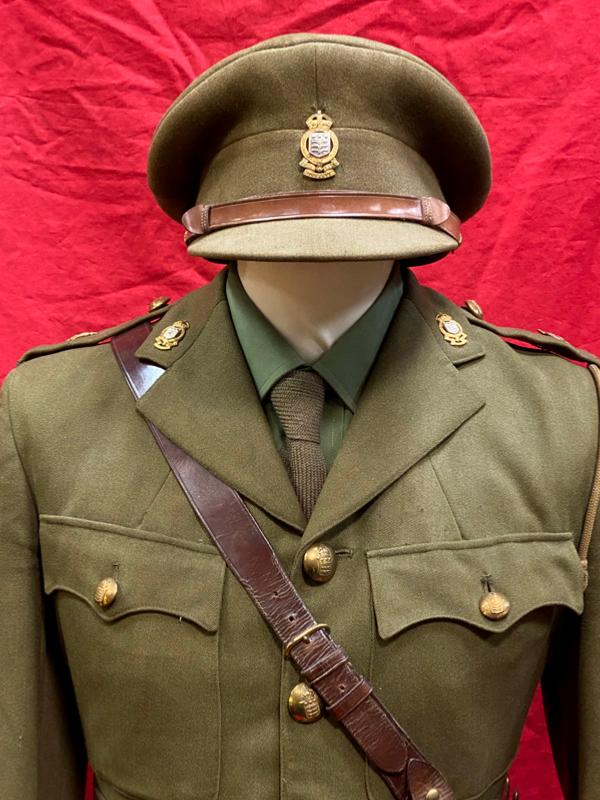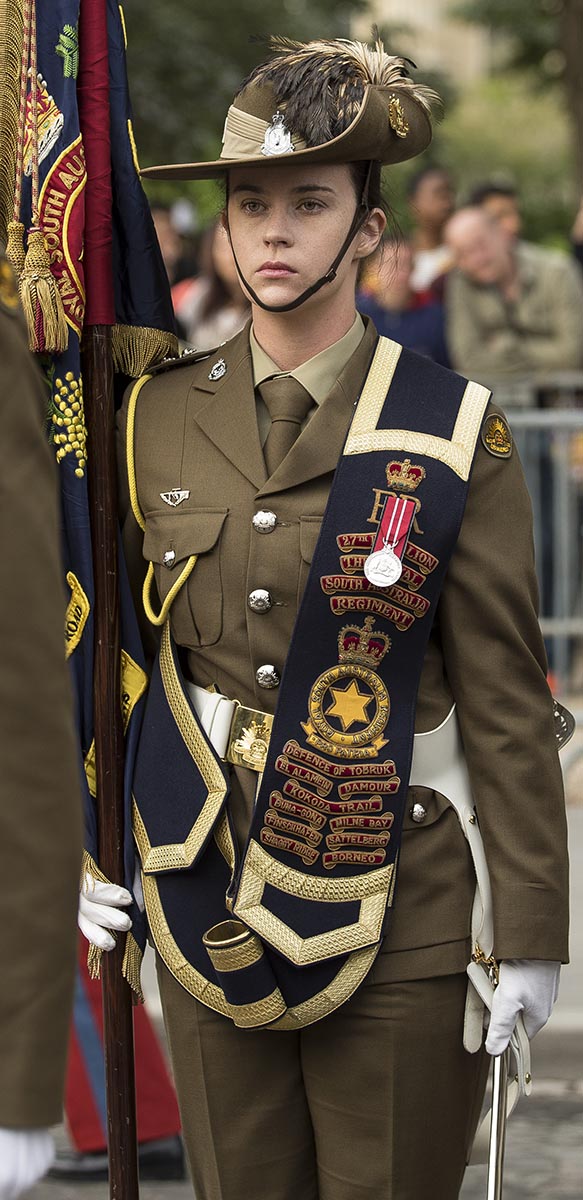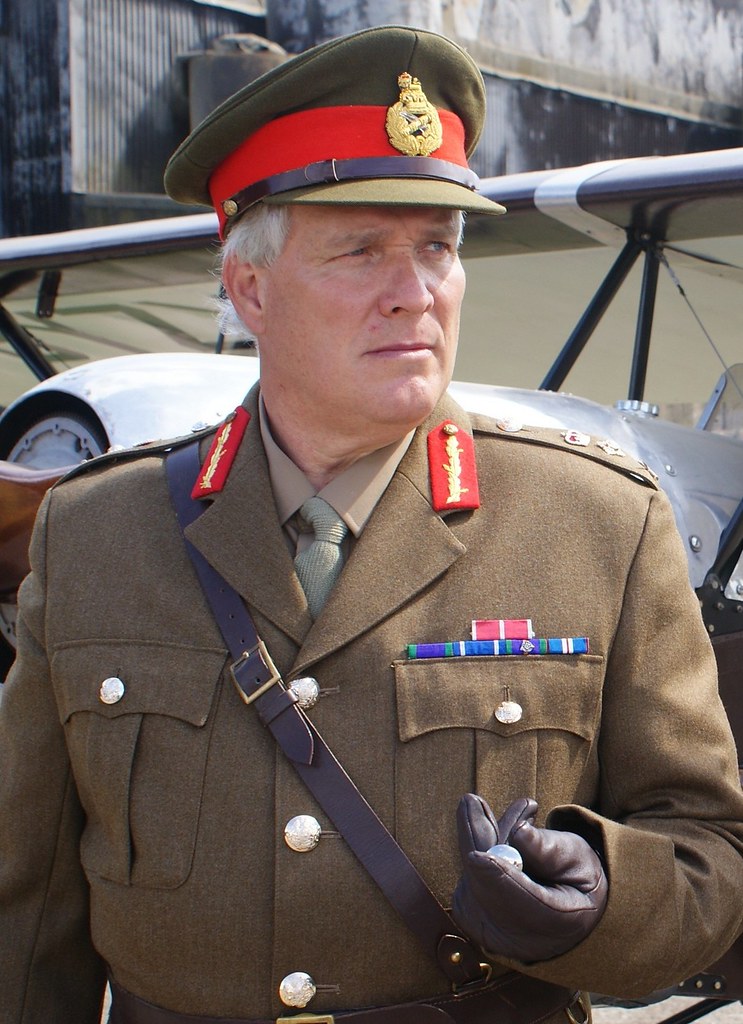
Irish Guards British army uniform, British uniforms, Military insignia
British Army Uniforms identifies the uniforms of each regiment of cavalry and infantry from 1751 to 1783, including those worn during the Seven Years' War and the American War of Independence. This lavishly illustrated book shows how the cut and colouring of the uniforms of the officers, the NCOs and the private soldiers changed over the course.

WW1 British Army Officers Uniform
The Band's State Dress is, therefore, the oldest continually worn uniform in the British Army. It is only worn on occasions when a senior member of the Royal Family is present or the incumbent Lord Mayor of London.. Knightsbridge, under a special lock and key with a senior non-commissioned officer assigned to the equipment's protection. 4.

TriTwins Why British Army Officers wear red
Soldier's Kit Locker containing general-issue uniform (Army Air Corps).. The uniforms of the British Army currently exist in twelve categories ranging from ceremonial uniforms to combat dress (with full dress uniform and frock coats listed in addition). Uniforms in the British Army are specific to the regiment (or corps) to which a soldier belongs.Full dress presents the most differentiation.

3VC recipients at The memorial for the fallen at the SASR Military honor, Military outfit
Redcoat. Perhaps the most famous item of dress in the British Military is the historic Red Coat as worn by most regiments of the British Army between the 17th and 20th centuries. Although many believe that the iconic red colour was adopted as a way to disguise blood stains, it is actually due to the fact that, during the 17th century, red dye.

British Army celebrates new division in Germany GOV.UK
The uniforms of the British Army currently exist in twelve categories ranging from ceremonial uniforms to combat dress (with full dress uniform and frock coats listed in addition).[1]. which 19th-century officers paired with a uniform waistcoat for evening wear.[1] No.11: Warm weather mess dress. A white jacket is substituted for the.

RCASC 19011968 Uniforms 19141918 british army uniforms British army uniform, Canadian
Service Dress (British Army) Service Dress is the style of khaki service dress uniform introduced by the British Army for use in the field from the early 1900s, following the experiences of a number of imperial wars and conflicts, including the Second Boer War. This variant of uniform continues to be worn today, although only in a formal role.

What's The Deal With British Military Uniforms?
Media in category "Full and ceremonial dress uniforms of the British Army" The following 112 files are in this category, out of 112 total.. Black officer's uniform (26859299482).jpg 2,736 × 3,648; 3.11 MB. Blues and Royals officer's full dress tunic.jpg 3,130 × 4,695; 11.81 MB.

British Infantry Officer (1812) British army uniform, British uniforms, Military costumes
British Colonial Conflicts and the Crimean War, 1816-1914. 24th Officer Coat and Shako, 1830 for Fort Lennox National Historic Site. We have reproduced a number of 19th century British Army and Navy uniforms for various museums and collectors. The following are some examples.

WW2 British Royal Army Ordnance Corp Officer's Tunic,Cap & Uniform Items
Turbans. Turbans are worn by Sikh members of the British Armed Forces. Sikh service members wearing turbans. The turban of the junior rating lacks a cap badge, as is the case with the sailor cap it replaces. A Sikh Royal Air Force officer with an officer's cap badge on a turban.

Army New Dress Uniform Black Cock Shemale
AND BAND UNIFORMS RELEASED: OCT 2020 Ministry ' of Defence . 10 15 20 25 30 Section AT3-10, DMC CP. COAT, MAN'S, No.4 Dress, Army Officers Scottish Regiments. 59 COAT, MAN'S, No.4 Dress, Army Officers, Scottish Regiments continued.

Pin by Editing Points on IllusionsFX/Cosplay etc. British army uniform, An officer and a
British Army 1939-1940 - temperate combat uniforms At this stage of the war, there were two uniforms that were worn by British soldiers: the very recognisable and well known 1937 pattern battledress (BD)uniform, and the largely obsolete 1922 pattern service dress (SD), the former supposedly replacing the latter, however many units had not been.

British Army General www.starnow.co.uk/christopherw33618 C… Flickr
British Army officer rank insignia. Listed in the table below are the insignia—emblems of authority—of the British Army. Badges for field officers were introduced in 1810 and the insignia was moved to the epaulettes in 1880. On ceremonial or parade uniforms these ranks continue to be worn on the epaulettes, either as cloth slides or as.

WW2 British Army Officer Uniform Package The History Bunker Ltd
Warrant Officer Class 1. The most senior soldier rank in the British Army, typically reached after 18 years of outstanding service. WO1 are the senior advisors of their unit's Commanding Officer, with leadership, discipline and welfare responsibilities of up to 650 officers and soldiers and equipment.

Pin on British Armed forces, UK Prime Minister
'The Evolution of British Army Uniforms Through History'The British Army is one of the world's most experienced fighting forces. From Blenheim to Waterloo, f.

Ww2 British Staff Officer Uniform Package Images and Photos finder
The uniforms of the British Army currently exist in sixteen categories ranging from ceremonial uniforms to combat dress. Prior to the English Civil War of 1642-51 the only significant instances of uniform dress in British military culture occurred in small bodyguard units, notably the Yeoman of the Guard. During the Civil War the Parliamentary New Model Army adopted a fairly standardised.

Military Officer, Military Personnel, Queens Guard, British Uniforms, Warrant Officer, Katheryn
Red coat, also referred to as redcoat or scarlet tunic, is a military garment formerly much used by British infantrymen, so customarily that the term became a common synecdoche for the soldiers themselves.. The red coat was widely (though not exclusively) used by the infantry units of the British military, including the British Army and Royal Marines, from the 16th to 19th centuries.